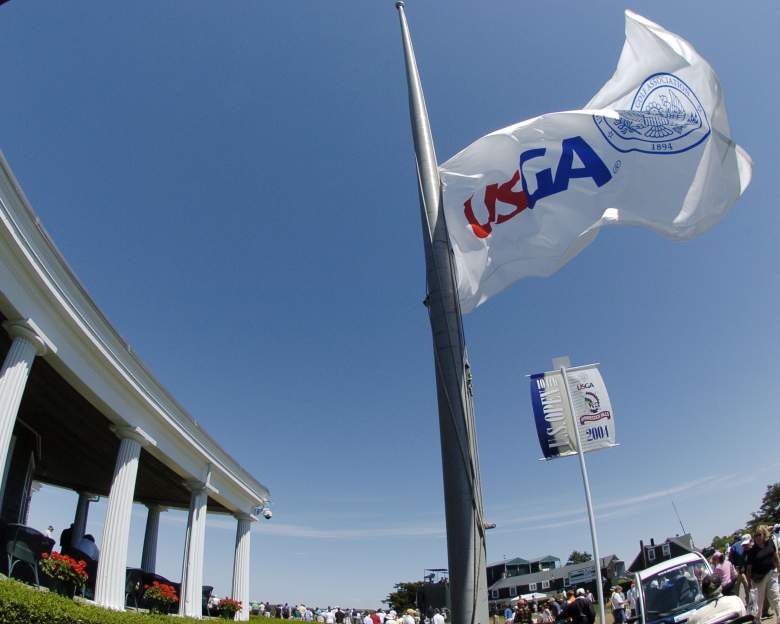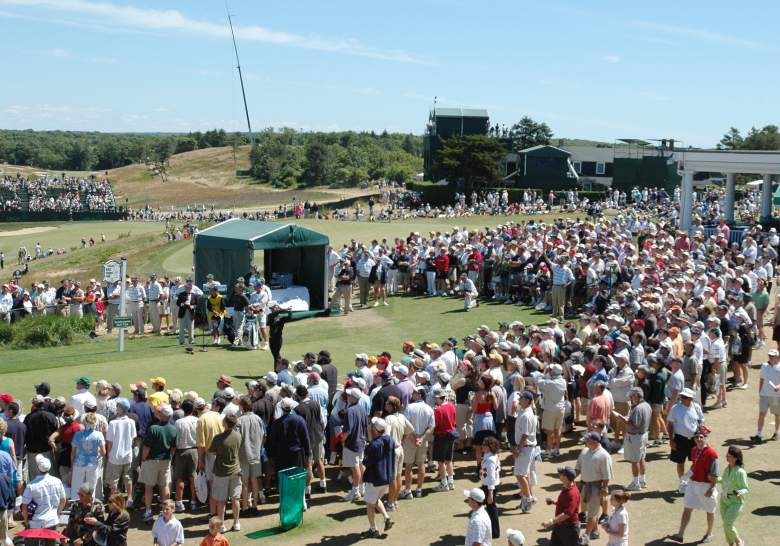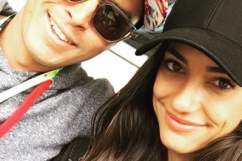
Shinnecock Hills Golf Club. (Getty)
The 2017 U.S. Open Championship just ended and plans are already underway for the 2018 tournament. Next year, one of golf’s four major championships will return to the historic Shinnecock Hills Golf Club, which has hosted four previous U.S. Opens. The 18-hole course is located in Southampton, on New York’s Long Island.
The golf club first opened 126 years ago and has already been chosen for the 2026 U.S. Open.
Here’s what you need to know about the Shinnecock Hills Golf Club.
1. Shinnecock Claims to Be the Oldest Incorporated Golf Club in the U.S.

Retief Goosen of South Africa won the 2004 US Open at Shinnecock. (Getty)
Shinnecock Hills Gold Club was founded in 1891 and claims to be the oldest incorporated golf club in the U.S.
As the New York Times notes, the course was built for William K. Vanderbilt and other wealthy residents. They met Willie Dunn of Scotland.
According to Golf Club Atlas, Vanderbilt, Edward S. Meade, and Duncan Cryder were on a trip in Biarritz, France when they met Dunn and hatched the idea of building a course in the U.S.
In late 1891, the 12-hole golf course, designed by Willie Davis, then Davis moved on to design the Newport Country Club. The next year, the Stanford White-designed club house opened and it’s the oldest golf club house in the U.S. In 1892, Dunn added six more holes. In 1937, William Flynn redesigned the course. For the 2004 U.S. Open, the course length was extended to 6,996 yards.
In 1895, Shinnecock was one of the five founding clubs of the United States Golf Association.
2. Shinnecock Is Named After a Local Native American Tribe Which Sued New York

(Getty)
The course is named after the Shinnecock Indian Nation, which has been in legal battles with the State of New York over reclaiming land on Long Island for years.
As The Guardian explains, the tribe first reached an agreement with Europeans in 1703 that gave them an area around Southampton for a 1,000-year lease. In 1859, that deal was dropped by settlers and the tribe’s land was reduced even further.
In 2005, the tribe sued the state in an attempt to get back 3,600 acres in the Hamptons, including land that’s part of the golf course and part of the Stony Brook Southampton college campus. A decade after the suit was filed, Newsday reported that the U.S. Curt of Appeals in Manhattan ruled 3-0 against the tribe.
The next step for the case was taking it to the U.S. Supreme Court, but the court refused to hear the case.
Tribal trustees chairman Bryan Polite told Newsday that this was a “slap in the face,” adding that “This is what we fight for, from 1859. It has had grave consequences ever since then and every generation has battled this. That’s why everybody is so passionate about it.”
3. It’s Hosted 4 U.S. Open Championships

(Getty)
The 2018 U.S. Open Championship will be Shinnecock’s fifth (and 2026 with be its sixth). Shinnecock hosted the second ever U.S. Open in 1896, when James Foulis won.
However, the U.S. Open didn’t return to the club until 1986, when Raymond Floyd won. In 1995, Coey Pavin won and in 2004, Retief Goosen beat Phil Mickelson by two shots.
As the AP notes, the challenge for the 2018 U.S. Open will be figuring out how to make it more challenging.
“Shinnecock is a challenging course to set up, and we certainly experienced that in 2004 when we let the course get away from us the last round,” USGA president Jim Hyler said when Shinnecock won the 2018 U.S. Open. “This has been well chronicled and discussed over the years. I will tell you that we have used this as a wholesome learning experience, and this experience led us to the development of our current setup philosophy that we use today.”
The 2019 U.S. Open will be held at Pebble Beach.
4. Shinnecock Was the First Organized Golf Club to Admit Women

Shigeki Maruyama during the 2004 U.S. Open. (Getty)
From the moment it opened, Shinnecock has been open to women members, making it the first U.S. organized golf club to admit female members.
According to 27East.com, the first woman to join the club was Janet Hoyt, the daughter of U.S. Supreme Court Chief Justice Salmon Chase. After the joined, she called for the construction of a nine-hole women’s course.
The winner of the first U.S. Women’s Amateur Championship in 1995 was Lucy Barnes, who was a Shinnecock member. It was also the site of the first ever women’s championship in 1900, which Frances Griscom won.
Shinnecock wasn’t the first ever golf club in the world to admit women though. That distinction belongs to St. Andrews in Scotland, which formed a Ladies Golf Club in 1867.
Shinnecock was also where America’s first pro black golfer played. As the New York Post notes, John Shippen Jr. played at the 1896 U.S. Open and almost won it. His father was the pastor of a church in Shinnecock and Shippen was only 16 years old at the time of the tournament. At one point, he was the first American to ever lead a U.S. Open, but came in fifth. He earned a $10 check for his performance.
5. Shinnecock Is Ranked as the Fourth-Greatest Golf Course by Golf Digest

Tiger Woods at the 2004 U.S. Open. (Getty)
For the 2017 edition of its 100 Greatest golf courses list, Golf Digest ranked Shinnecock as the fourth-greatest, taking into account the changes Bill Coore and Ben Crenshaw made in 2012 to prepare for the 2018 U.S. Open.
“Fantastic in every way especially since they removed so many trees since the last time I played it. Brings the course back to life and allows the wind to play even more of a factor,” one of Golf Digest’s panelists wrote. “Tests every club in the bag. Hard to believe very little earth was moved to create such a great test of golf. Natural setting makes memorability, aesthetics, and ambiance off the chart — outdone only by the choices and difficulty presented by so many shots.”
The club is also known for its exclusivity. Nowhere on its website are details on initiation fees and the guest information page notes that you must be accompanied by a member to play and obtain a green fee ticket. In 2015, PJStar.com reported that the green fee is $350 per round and you have to have a caddy.


